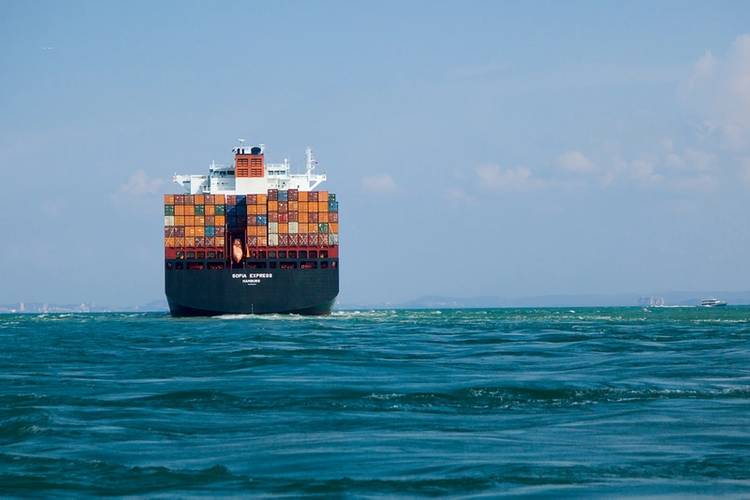Remarks from Federal Maritime Commissioner William P. Doyle at the FTR Transportation Conference 2017, Indianapolis, Ind.
On September 13, 2017, I voted to expedite the Commission’s decision and support THE Alliance’s amendment authorizing creation of a contingency trust fund designed to protect customers’ cargo and the ocean transportation chain should one of THE Alliance’s carriers experience financial distress or an insolvency event. I support the goal behind this amendment: the smooth and continuous flow of cargo even in the face of another ocean carrier bankruptcy or catastrophic failure. The amendment will go into effect Thursday, September 14, 2017.
Parties to THE Alliance Agreement are Hapag-Lloyd AG and Hapag-Lloyd USA LLC (acting as one party); Kawasaki Kisen Kaisha, Ltd.; Mitsui O.S.K. Lines, Ltd.; Nippon Yusen Kaisha; and Yang Ming Marine Transport Corp. Each of these carriers would initially contribute $1 million into the contingency trust fund and a further $9 million in additional funds or through a letter of credit.
According to the filing, the agreement establishes the voting rights and obligations for the Parties in the event of an “Insolvency Event or Material Adverse Change.” In addition, the agreement establishes procedures for the orderly removal and/or replacement of vessels and the rights of the remaining Parties to negotiate directly with agents and subcontractors of the affected Party. The contingency fund would be administered by a trustee.
The affected Party is the ocean carrier that is in trouble, i.e., experiencing an insolvency event or adverse material changes.
An “insolvency event” includes where a Liner company:
- is dissolved other than pursuant to a solvent consolidation or merger;
- becomes insolvent, unable to pay its debts as they become due;
- makes a general assignment, arrangement or composition with creditors;
- institutes a proceeding against itself seeking a judgment of insolvency or bankruptcy;
- seeks or becomes subject to the appointment of an administrator, receiver or liquidator;
- where a secured party has taken possession of all or substantially all its assets.
A “material adverse change” is defined as the occurrence, in relation to a Liner company, of any event or circumstance likely to have a material adverse effect on the affected Line. The other Lines in THE Alliance shall be entitled to take into consideration the affected Line’s interim and/or annual financial reports in their decision making.
Generally, the contingency fund may be used to ensure that any affected Party:
- continues to make port calls in accordance with the services provided by THE Alliance, pay costs, losses or liabilities reasonably incurred by the Parties as a result of the arrest of a vessel;
- to advance funds or payments related to carriage, handling, storage or delivery of containers carried by an affected Liner;
- pay claims of third parties which could lead to the arrest or detention of a vessel;
- reimburse the non-affected Parties for costs, losses or liabilities incurred by the other members of THE Alliance.
Should there be an actual insolvency event or material adverse change, the Parties would form a committee that would exclude the affected Liner. The committee by unanimous agreement would approve all disbursements from the contingency fund. The committee would instruct the fund’s trustee on actual disbursements and on other administrative functions.
Finally, the fund is designed to be a living instrument. For instance, following disbursements, the Parties would replenish the account and otherwise ensure that the fund is healthy.
As I have noted previously, last year’s collapse of Hanjin Shipping was a wakeup call for the entire ocean transportation and logistics chain. Over $14 billion worth of cargo was stranded at sea on 100 ships scattered around the globe. It is so important that another Hanjin debacle does not happen again. Companies may fail, but the responsibility lies with everyone, at least to the extent that we do not have the damage that occurred post-Hanjin.
Looking back, things could have been done differently. Looking forward, things must be done differently. And, things are being done differently with the establishment of this contingency trust fund by THE Alliance. Hopefully the contingency fund will never have to be tapped.
I firmly believe that if a carrier joins an alliance, it is the responsibility of the alliance members to ensure the cargo gets to where it needs to go. If a carrier fails and that carrier is party to an alliance, the cargo carried on the failed company’s ships may equate to a fraction of the container volume carried. Many containers may belong to the other carriers in the alliance. My point is this — Hanjin was carrying the cargo not only of Hanjin but of the other alliance members of CKYHE as well.
Everyone suffered in the ocean maritime transportation chain. So it is essential that all take responsibility. The responsibility is to get the ship into port and get it unloaded, get the empties onboard and get the ship back out to sea.
I applaud the innovative actions taken by carriers of THE Alliance. It is a responsible commercial reaction to the events of last year and it serves to assure the shipping public that its cargo will be delivered in a reliable and timely manner.














